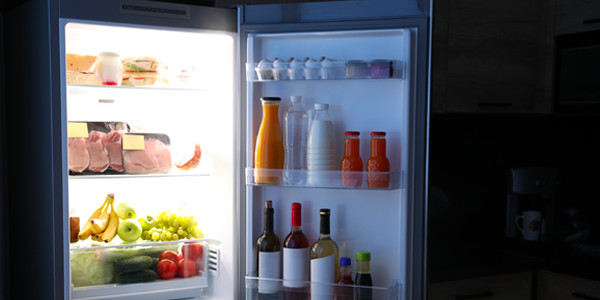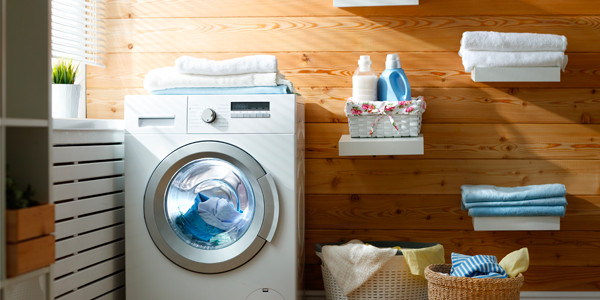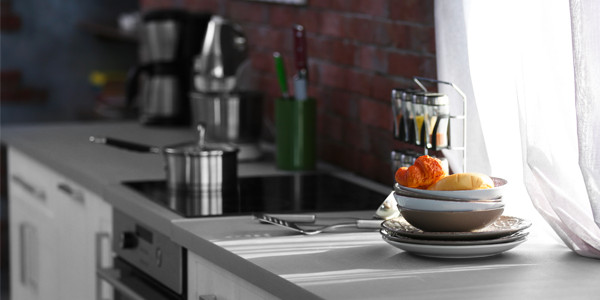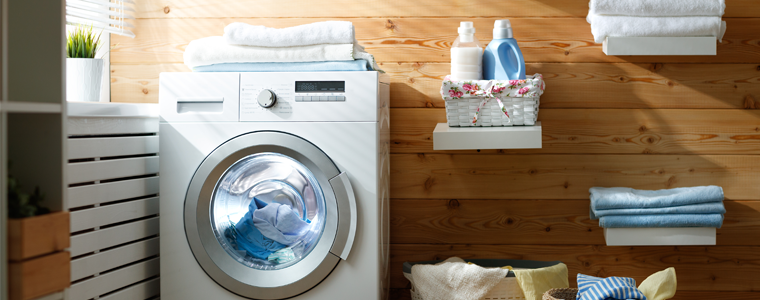Whether you’re moving to the Hawaiian islands, between islands or to the mainland, you may consider taking your appliances with you at some point. Moving appliances can be a great way to save some money (after all, if you bring them with you, you won’t need to replace them!) However, there are a few things you need to know before moving your stove, refrigerator, washers and other large appliances.
Here’s the good news: You can safely move all of your appliances—your washing machine, dryer, stove, refrigerator or freezer—pretty much anywhere. That being said, there are two questions you’ll likely ask yourself in the process:
- Should you take them with you?
- What’s the best way to move them to avoid damaging them?
We’ll answer these questions and more in this complete guide to moving your appliances. We’ll start with the most important inquiry:
Should You Move Your Appliances?

There are a number of reasons why you might take your appliances with you. Maybe you just upgraded to a fancy new Sub-Zero refrigerator, and you want to continue to enjoy it in your new kitchen. Or maybe your future home has older appliances that you’d want to replace anyway.
However, keep in mind that appliances will add significant weight to your shipment and, therefore, significant cost. So you’ll want to consider this decision carefully. Ask yourself:
1. Are my appliances older or outdated?
If so, it’s probably not worth the cost to ship them.
2. Will my appliances even fit in my new kitchen?
If you’re not completely sure, it’s probably a good idea to leave them behind.
And perhaps most importantly . . .
3. Will my new appliances fit into my house?
We can attest from personal experience that we’ve pulled large appliances out of containers for our customers in Hawaii—only to find that they won’t fit through the front door, up a narrow flight of stairs, etc. So before you shell out the money to ship them, make sure your appliances will pass this basic test.
If you’re giving your appliances the green light to move, your next step will be to prep them for moving. Some of this work, you can do yourself. Other pieces will require a pro. Let’s discuss the difference.
What Will My Moving Company Do for Me? (And What Will They Not Do?)
Whether you’re moving appliances across the island or across the ocean, there’s a little bit of prep work that requires pro assistance.
Many people expect their moving company to do some of these things. However, just so there are no surprises on Moving Day, we want to bring clarity to the situation.
Your moving company WILL do the actual lifting, moving, and transportation of your appliances.
However, your moving company WILL NOT disconnect or connect things like water lines and gas lines.
If you decide to move your appliances, make sure you hire a professional to:
- Disconnect the water line behind your refrigerator, if you have an automatic ice maker.
- Disconnect gas lines to any appliances like gas ranges or gas-heated dryers.
- Ask about any high-voltage connections attached to large appliances that might need some extra attention.
Keep in mind: Whatever connections you had a technician dismantle at your old home will require professional assistance at your new home.
Once you’ve called in the pros, there are also a few things you’ll need to do to prep your appliances for an easy move.
How Do I Prep My Appliances for Their Move?
Whether your appliances will be traveling by truck across the island or whether they’ll be loaded in a container for an interisland or mainland move, you’ll want to complete a few basic prep steps to keep your appliances safe in transit.
Below, we’ll take you through our tips for the four most common appliances we move: washers, dryers, stoves and refrigerators/freezers.
But first, two overall pointers:
- If your appliances are going into a container—or into storage for any length of time—eliminating moisture will be a big concern. Moisture breeds mold, so make sure you dry out your appliances as well as you can. We’ll give you some tips on that below.
- If you’ve hired a full-service moving company that will pack and move your belongings for you, they may help you with some of these steps. When you have your in-home survey, make sure you ask your moving company rep what they expect you to take care of, if anything.
Now, let’s discuss how to prep four common appliances for their move.
Preparing Your Washing Machine for a Move:

- Disconnect any hoses (ask a pro if necessary) and drain them well. Ideally, let the hoses sit for a few days so they dry completely.
- If there’s any water in the washing machine, dry it with a towel. The less moisture in your shipment, the better.
- If your washing machine has a filter, clean that out, too.
- If you have the shipping bolts (also known as “transit bolts”) for your washer, you may want to install them to keep vital parts from shifting during the move. Don’t have the bolts? Google the model of your washing machine along with the words “transit bolts” and you’ll likely find both instructions and ordering options. (Depending on the distance of your move, these may not be as vital. Talk to your movers or contact your manufacturer to learn more.)
- If you’re moving your washing machine yourself, secure the cord to the machine, then wrap the machine in a heavy moving blanket to prevent damage to the exterior. If you’ve hired a full-service moving company, they’ll likely handle this piece.
Preparing Your Dryer for a Move:
- Clean out the lint trap, screen and vent thoroughly. You may even want to use a vacuum cleaner for maximum cleaning power!
- If you’re moving a gas dryer, don’t forget to call in a pro to disconnect the gas line and prepare it for transit.
- As with your washer, if you’re moving your dryer yourself, secure the cord to the machine and wrap the exterior in a moving blanket. If you’ve hired a full-service moving company, they’ll likely handle this piece.
Preparing Your Stove for a Move:

- As we mentioned earlier, a gas stove will require a visit from a technician, both before you move and upon arrival at your new home. Make sure you make an appointment prior to Moving Day to keep stress low on the big day.
- Remove any detachable parts from your stove, such as wire racks and glass sheets. These items should be packed and moved separately.
- As with your other appliances, secure the cord to the appliance and wrap it in a heavy blanket to prevent damage. A full-service moving company will take care of this step for you.
Preparing Your Refrigerator or Freezer for a Move:
Refrigerators and freezers require a little bit of extra prep from you for one main reason: moisture. These appliances need to be emptied and dried out completely before you move or you may end up with moisture in your shipment.
If you’re simply moving across the island, this is less of a concern. However, if your belongings are going into a warm, dark container for any length of time—the perfect breeding ground for mold—these steps are extremely important.
Here’s what we recommend:
- One week before your move, unplug your refrigerator or freezer and defrost it.
- As soon as any ice has melted, give the whole thing a thorough cleaning.
- Leave the doors open and let the appliance dry out completely.
- A few days before your move, put a few boxes of baking soda in the fridge and freezer to absorb moisture and odors.
- The night before, open the appliances back up and towel out any remaining moisture.
Additionally, make sure you:
- Take out any removable parts, like drawers and racks, and pack them separately.
- If you’re prepping the appliance yourself, keep the doors from flying open by wrapping the appliance in stretch wrap. Secure the cord to the appliance, then wrap the body in a blanket to prevent damage. If you’re using a full-service moving company, they’ll likely take care of this step for you.
- One more note if you’re doing a DIY move: Many manufacturers recommend keeping your refrigerator upright as much as possible when you move it. They may also recommend leaving it in place in your new home for a few hours before plugging it in and turning it on. Check with your manufacturer to get their recommendation for your particular model.
Moving Your Appliances: A Little Prep Goes a Long Way
If you decide to take your appliances to your new home, these tips will help you prep them carefully to protect your investment, whether you’re moving within the Hawaiian islands or all the way to the mainland.
Additionally, if you’ve chosen to work with a full-service moving company to pack and ship your belongings, these guidelines will help you make sure you’re all set for Moving Day. When your crew arrives, your appliances will be prepped and ready for a safe journey to their new home.
Have more questions about shipping your appliances? Our experts would be happy to help. Just get in touch with us! We can help you with questions about local moves, interisland moves, mainland moves—and even international ones!
Tell us about your move!



